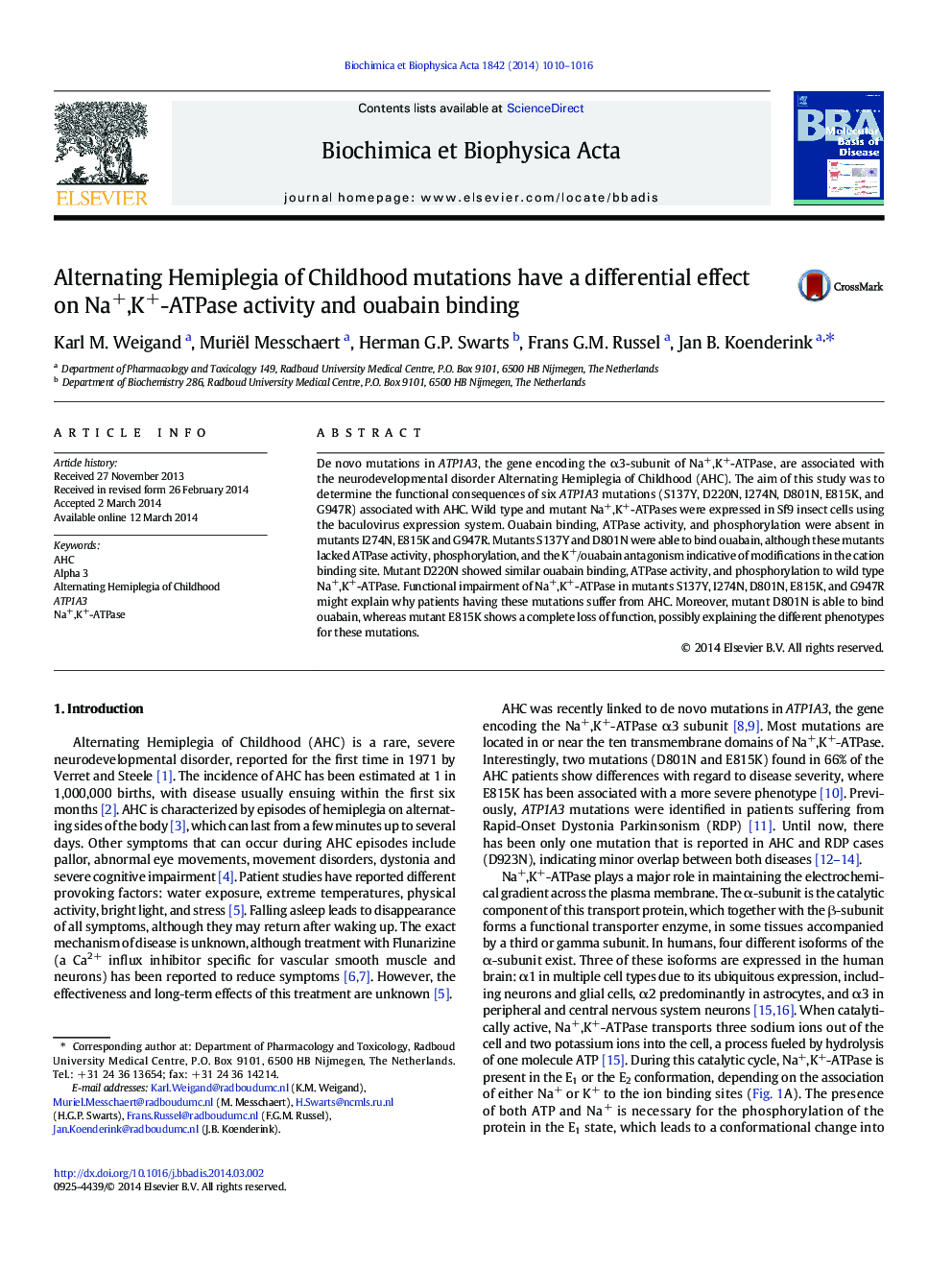| Article ID | Journal | Published Year | Pages | File Type |
|---|---|---|---|---|
| 8260217 | Biochimica et Biophysica Acta (BBA) - Molecular Basis of Disease | 2014 | 7 Pages |
Abstract
De novo mutations in ATP1A3, the gene encoding the α3-subunit of Na+,K+-ATPase, are associated with the neurodevelopmental disorder Alternating Hemiplegia of Childhood (AHC). The aim of this study was to determine the functional consequences of six ATP1A3 mutations (S137Y, D220N, I274N, D801N, E815K, and G947R) associated with AHC. Wild type and mutant Na+,K+-ATPases were expressed in Sf9 insect cells using the baculovirus expression system. Ouabain binding, ATPase activity, and phosphorylation were absent in mutants I274N, E815K and G947R. Mutants S137Y and D801N were able to bind ouabain, although these mutants lacked ATPase activity, phosphorylation, and the K+/ouabain antagonism indicative of modifications in the cation binding site. Mutant D220N showed similar ouabain binding, ATPase activity, and phosphorylation to wild type Na+,K+-ATPase. Functional impairment of Na+,K+-ATPase in mutants S137Y, I274N, D801N, E815K, and G947R might explain why patients having these mutations suffer from AHC. Moreover, mutant D801N is able to bind ouabain, whereas mutant E815K shows a complete loss of function, possibly explaining the different phenotypes for these mutations.
Related Topics
Life Sciences
Biochemistry, Genetics and Molecular Biology
Ageing
Authors
Karl M. Weigand, Muriël Messchaert, Herman G.P. Swarts, Frans G.M. Russel, Jan B. Koenderink,
